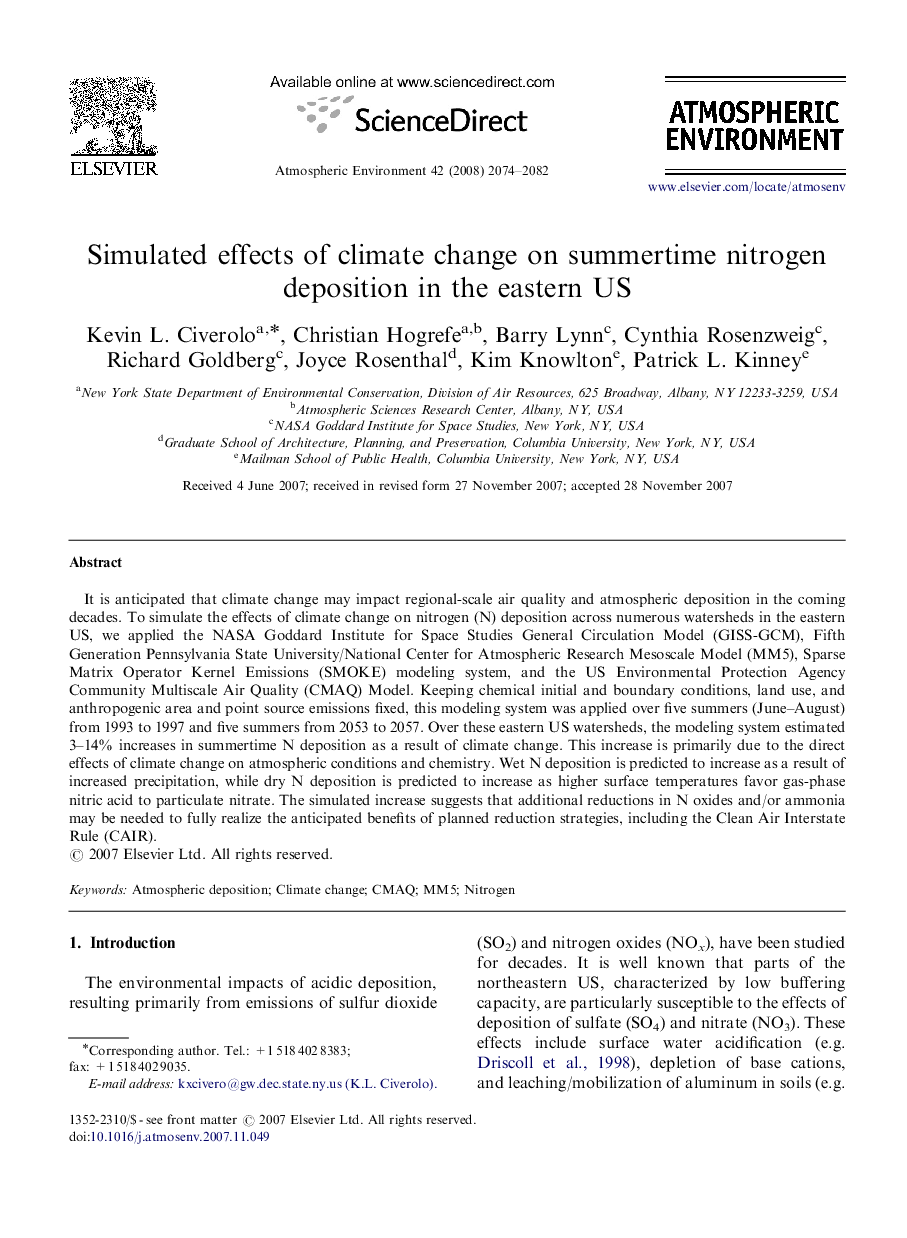| Article ID | Journal | Published Year | Pages | File Type |
|---|---|---|---|---|
| 4442644 | Atmospheric Environment | 2008 | 9 Pages |
It is anticipated that climate change may impact regional-scale air quality and atmospheric deposition in the coming decades. To simulate the effects of climate change on nitrogen (N) deposition across numerous watersheds in the eastern US, we applied the NASA Goddard Institute for Space Studies General Circulation Model (GISS-GCM), Fifth Generation Pennsylvania State University/National Center for Atmospheric Research Mesoscale Model (MM5), Sparse Matrix Operator Kernel Emissions (SMOKE) modeling system, and the US Environmental Protection Agency Community Multiscale Air Quality (CMAQ) Model. Keeping chemical initial and boundary conditions, land use, and anthropogenic area and point source emissions fixed, this modeling system was applied over five summers (June–August) from 1993 to 1997 and five summers from 2053 to 2057. Over these eastern US watersheds, the modeling system estimated 3–14% increases in summertime N deposition as a result of climate change. This increase is primarily due to the direct effects of climate change on atmospheric conditions and chemistry. Wet N deposition is predicted to increase as a result of increased precipitation, while dry N deposition is predicted to increase as higher surface temperatures favor gas-phase nitric acid to particulate nitrate. The simulated increase suggests that additional reductions in N oxides and/or ammonia may be needed to fully realize the anticipated benefits of planned reduction strategies, including the Clean Air Interstate Rule (CAIR).
